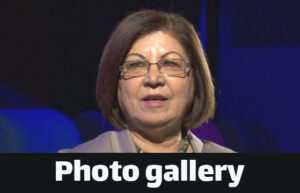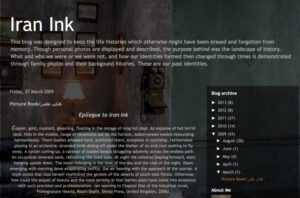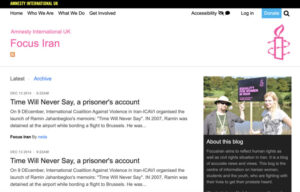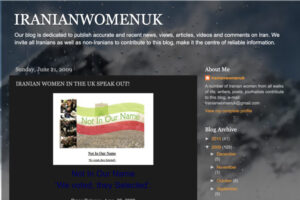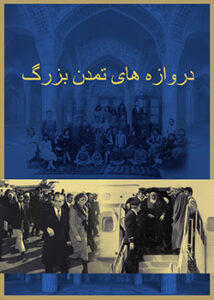A Brief History of Aviation and commercial airlines in Iran.

A Brief History of Aviation and commercial airlines in Iran
Written by Rouhi Shafii
Table of contents
- The early years of aviation in Iran
- Arrival of first aircraft
- Arrival of the first commercial aircraft in Iran
- Establishing the “pilot’s club” for training pilots
- A brief history of commercial airline in Iran
- Establishment of Iranian-owned commercial airline
- Iranian National Airline (Iran air) and the golden age of aviation in Iran
- The administrative structure of Iran air flight service
- Cabin crew recruitment, training and practice: establishing foundations for a successful airline :(a personal account)
- Expansion of flight services
- College for cabin service training
- Chronology
1-The early years of aviation in Iran
The early years of aviation in Iran goes back to the reign of Naser-al-Din Shah of Qajar dynasty(1831-1896) and the arrival of the first air balloon in Iran and its effects on the creation of air industry in the decades ahead.
The first air balloon was brought to Iran by two men; a French and an American who flew it over the city of Tabriz and then over central Tehran skies.[i]
In his memoirs, Naser_al_Din Shah wrote: “Two balloons went up to the sky from the entrance to the Moalem-Khaneh school. After consultation with our ministers, we went to the garden and up the Shams-Al-Emareh[1] and the harem population went on the rooftops to watch along with the people on the streets. The first balloon a red one went up, then fell in the late Sepah-Salar’s garden. The second, a white one which was inflated in the European style went up and stayed at the altitude of about two thousand feet for half an hour. Watching it was very, very interesting.” [2]

Figure 1The first air balloon in Iran
Years later, on one of his trips to Europe, Mozafar-al-Din Shah(1896-1907) brought back a balloon that did not inflate it. During the Constitutional Revolution (1905-1911) at the height of the conflict, some in the Mohammad-aliMirza administration suggested the use of the balloon to confront the revolutionists but when they opened the balloon, they realised it had been chewed up by the mice!
2- Arrival of the first aircraft in Iran
At around the last days of the first World War (1914 -1918), people in Tehran saw an aircraft flying at low altitude over the city. This aircraft was imported from Russia to port Anzali in northern Iran by ship. The army technicians assembled the aircraft and the pilot flew it to Tehran and landed at an army training site. Later on, it was stationed at another place[3] and the Polish pilot, Kosminisky charged the people money to fly it above Tehran. When Ahmad Shah was informed of this, he went to the base and took a photo with the aircraft which was published in one the French newspapers.[4] The pilot returned to Russia with his aircraft after a while.
3 – The first commercial aircraft
As minister of the war office at the time, Reza Khan Pahlavi understood that the airline industry was essential to the advancement of the country. He took the initiative to negotiate with several companies and in 1904 gave sole rights to the German company, Junkers[5]to start operations in Iran.[6]
Initially, Junkers imported one aircraft with a pilot and set up an office with an officer and an employee who registered flights. Later, Junkers imported several aircraft and expanded its operation between the cities of Mashad, Shiraz, Bushehr and Port Anzali.
Reza Khan registered the commercial airlines’ operations as part of the air force. The first Iranian pilot who was licensed to fly was colonel Pesian. Later, some officers were sent to France and Russia to get their licences. In 1904, Colonel Nakhjavan finished a long-distance flight and landed in Ghalemorghi airbase.

Figure 2 Colonel Pesian, the first Iranian pilot
4 – Establishment of the pilot’s club
The first club to train suitable candidates for the Iranian air force was set up in 1938. The officers’ club under the management of pilot Afhkami purchased a number of twin cabin aircraft. From among the candidates for flying, 22 were accepted, three of whom were women; Effat Tejaratchi, Ayna Oshid and Ghodsieh Farokhzad. The students were stationed at Dushan Tapeh airbase to start their training with Tigermate aircraft.

Figure 3 Effat Tejaratchi
On 17 October 1940, Efat Tejaratchi did a solo flight, which lasted for 15 minutes. Avina Oshid also completed her training but did not fly any aircraft during the world war. After the end of the war, she was employed by Iranian Airways and flew with the DC3 aircraft as co-pilot for a while. Ghodsieh Farokhzad also got her pilot’s licence.

Figure 4 The first graduate pilots, Effat Tegaratchi, Avina Oshid and Ghodsieh Farokhzad are
the 3 women pictured
The civil aviation body was set up in 1944 to administer the growing airline industry. Initially, this organisation was limited to two employees in one room in central Tehran. Later, it moved to the Mehrabad airport and expanded further. In 1947, the parliament ratified the establishment of the civil aviation body under the Ministry of Road

.
5 – A brief history of commercial airlines[7]
Junker was the first commercial airline that operated in Iran on a 5 years contract. Initially, it brought one aircraft with the capacity of carrying 4 passengers.[8]

Nevertheless, this aircraft transported 20,000 passengers during that period.
In 1944, the government purchased several Dragon Rapid aircraft from Britain for the Ministry of Post and Telegram. The air force handled the maintenance of these aircraft.[9]

Figure 5 Dragon Rapid
In 1942-1949, more aircraft were purchased to meet the growing demand.
6- Setting up Iranian commercial airlines
The first Iranian commercial airline was set up by Reza Afshar and Gholamhossein Ebtehaj, two business tycoons and some small investors with a capital of 50 million Rials. This airline operated domestically with just one weekly flight to Europe.[10]the demand for air travel increased, another company, United Iranian Airlines was set up with private and state funds.
In 1955, Persian Air Service was set up which operated by the aircraft it rented from Sabena, the Swedish airline. Shortly after that, Persian Air Service signed a contract with the TWA to bring US technical and operational personnel to Iran.


Figure 6DC3
Figure 7Viscount aircraft
7– Iranian National Airlines “Iran Air” and the start of the golden age of commercial aviation
In the 1960s, Mohammad Reza Shah’s modernisation programmes began in all spheres and the need for a national airline that would connect Iran to the rest of the world was put high on the agenda. Therefore, the two private-owned airlines; Iranian Airways and Persian Air Service were bought by the government and the National Iranian Airlines “Iran Air” was set up. The programmes to construct underlying structures and the expansion of operations at an international level started in earnest. To fulfil such an ambitious plan, General Alimohammed Khademi, who was experienced at high-level management, both in the private sector as well as the air force was invited to take the reign.[11]
General Khademi was a man of discipline and order. He invited a number of top managers to join the company. In addition to the purchase of modern aircraft, the design of a logo for the new airline which would represent Iran in the aviation world was put to competition. From among the contestants, Edward Zahrabian’s[12] design which was inspired by the bird shape at the columns in the Persepolis was approved.

Iran Air began its operations with DC3, DC6, Vickers and Viscounts and some other aircraft.
Later, in the 1960s it purchased a number of Boeing 727. In the 1970s Iran Air had a fleet of modern Boeings at its service including Boing 747.
The recruitment of flight crew: pilots, co-pilots, flight engineers and technicians and their training began in earnest. To fulfil this, Iran Air signed a contract with Pan American Airlines (PAN AM) to train and also to supervise the operations in its initial phase. A number of Pan American experts in the field arrived in Iran on a two years contract. Apart from establishing foundations for the new airline, they were expected to train Iranian personnel to replace them at the end of their contract.
8-The administrative structure of Iran Air
In the early 1960s and onwards, Iran Air had a central office in downtown Tehran on Villa Street. The ground floor was designed for sales and the rest, other administrative operations, including General Khademi’s offices on the top floor.
The training centre was located on Sa’adi Street in downtown Tehran under the supervision of George King. This centre was equipped to train the newly recruited flight personnel. Mehrabad airport turned into the beating heart of Iran Air operations. Ground personnel, catering, offices of the Pan American personnel who worked in the operations as well as hangers for aircraft and technicians were all located at the Mehrabad airport.
9- Cabin crew recruitment, training and practice: establishing foundations for a successful airline :(a personal account)
In this section, I will briefly deliberate the Iran Air cabin crew history from a personal perspective. In early 1960, I was employed to train and later manage the cabin crew services in the initial phases of building a commercial airline for Iran which in later years, brought Iran Air to international standards.
Building the structure of an airline required more than just buying aircraft. Apart from the trained pilots, co-pilots, flight engineers and ground technicians and personnel, cabin crew consisting of young men and women were required to give service to the passengers and safeguard their well-being during each flight. Cabin crew are the image of any airline and for that Iran air required trained and efficient personnel to represent the airline on the world stage.
At the start of its operation as a state-owned airline, the existing flight service crew were transferred from the previous private airline which was bought by the government. In 1962, a small number were sent to Belgian to get training with the Sabena airlines but with the speed of demands, urgent measures were to be taken to have more trained cabin crew. To see through this, in 1963, Ms Lee Trojilo, from the Pan American training centre in Miami, Florida arrived in Tehran to organise the training sessions for the existing crew as well as the new recruits.
Lee Trojilo was on a two years contract and one of her responsibilities was to help recruit and train her future replacement. Adverts were published in the daily papers for “a young, adventurous teacher who also knew the English language well”.
At the time, I was a graduate of Tehran Teachers’ Training College with a major in English. I had also travelled to the US a year before on a scholarship and I did not anticipate spending my life in a high school teaching English. I applied for the position and was accepted immediately. A young man from inside the company joined me as well.
We attended the training sessions with Lee in the Iran Air training centre which was also managed by an American[13] and after completion and in order to get further insight and learn and gain experience to use in our future teaching courses, we were scheduled to fly on various routes for around 6 months. At the end of this period, we were sent to the US, first to the Pan Am offices in New York and then to the Pan Am training centre in Miami, where we spent a 3 months course. On return to Iran, I was also sent to Beirut to attend another 2 months course at the Middle Eastern airlines centre. At the end of almost a year of training, we were ready to take over from Lee Trojilo whose contract was about to end.[14]
Our job started by writing and compiling manuals in which, details of cabin crew duties from the time they were picked up to the time they were dropped at home were explained.
We then set standards for the recruitment of flight crew and attended the recruitment panel. The flight service profession was a new phenomenon in Iran and although it was considered “too adventurous” to some families, applicants were outnumbered by the demand.
We also set standards for recruitment, training and in-flight practice. Job descriptions were written and conditions for the promotion of new recruits to active flight attendants and later flight supervisors (purser) and also, promotion from domestic flights to international flights, were set. New style uniforms were designed and ordered first to a domestic supplier and later to a French company. Gradually, Iran Air became known among the international air travel community as an airline that offered all the in-flight comfort and security required of an airline.

Figure 8 Ceremony at the end of a training course.

Figure 9 giving certificates to a new graduate by Houshang Tajadod, Commercial Director.
10- Expansion of Flight services
In 1964, as Iran Air expanded and the demands for higher standards for the cabin crew services were required. Upon the direct orders from General Khademi, who had heard of my management skills, I was transferred from the training section to the operations and appointed as head of cabin crew services. This department worked under the supervision of an American, Tom Temple[15]who immediately handed me all the control and the decision-making to transform the image of Iran Air in the coming years. By then there were more than100 flight attendants already in operation. The administration of this vast number of young men and women who were in various places at any given time together with upholding our high standards were not easy to maintain. I began to set targets to bring the flight service crew on board and improve the standards. To further the preferment of services, a third of the existing cabin crew who would not comply to the new regime were laid off or transferred to other sections and new recruits arrived following initial training. Supervisors from among the more experienced flight service crew were appointed to fly regularly and brief my office on the performance of the crew. I also often travelled on various routes unexpectedly and registered my observations. These measures helped us to gradually promote our standards to the international level. Relations between the cabin crew and the pilots which were often problematic were improved and within a period of four years until my departure from Iran Air, foundations for a disciplined and efficient cabin crew service were laid. In the late 1960s, the services offered by Iran Air were of the highest standards among the international airlines. These included the food prepared by the catering departments both in Tehran and other cities inside and outside the country, where Iran Air had contracts with the best providers. In later years, the in-flight service, Iranian style in the resting area upstairs the jumbo jets made Iran Air one the most enjoyable airlines to travel with. Thanks to the directorship of the late General Khademi and the collective efforts, Iran Air found its place among the top airlines in the world.

Figure 10 At an officers’ club with General Khademin & wife. Me in the floral dress.
Figure 11 Heathrow airport, 1967
11- Iran Air Flight attendants’ Training College
In 1972, Iran Air cabin crew increased to hundreds with tens of recruits from the European countries. Iran Air applied for a licence to change the cabin crew training section into a “College” for training cabin crew. Ministry of Higher Education granted the licence and the college, equipped with all modern devices such as mock-up cabin and catering galley offered twenty months full-time courses with six months of flight training. These were part of the expansion of Iran air along with new aircraft which were purchased from the Boing Company.
The two decades of 1960/1970 were the golden age of Iran Air. Under the capable management of the late General Khademi, Iran Air became the second-best airline[16] in the world, for its safety record and the services it offered to passengers from arrival to an airport to land at their destination.

Figure 12Welcome, we understand you better.

Figure 13One of Iran Air Jumbo jets

13 – Summary
The commercial air industry in Iran has a history of about 80 years. In the early 1960s Iranian state airlines (Iran Air) was set up by buying off the two main private airlines and modernising them to meet the growing demand for air travel. The directorship of the late General Alimohamad Khademi promoted Iran Air from an unknown airline to rank the second-best in the 1970s, both for the services it offered and the safety of its aircraft.
14 – Chronology of Eighty years of aviation in Iran
1923-27: Establishment of Iranian Airforce
1932-27: Start of air travel in Iran by the German company, Junker
1932-38: Establishment of Commercial air travel
1938-46: Setting up an air travel company for the ministry of post
145-61: Establishment of Iranian airways and Persian air services
1961-1962: Establishment of Iran United 1962-79: Iran Air and t
1- https://iranicaonline.org/articles/aviation-history
[2] Shams-ol-Emareh is an iconic building built around 1830 and notable for its height, decorations and esign.
[3] Ghasre Qajar
[4] https://commons.wikimedia.org/wiki/File:First_Airplane_(Bl%C3%A9riot_XI)_in_Iran_-4th_January_1914_in_Tehran_-_Ahmad_Shah_Qajar_(Center)_and_Kosminsky_(Polish_Pilot)_(Left)_-_Illustration_(French_Magazine).jpg
[5] The Junkers was a German company
[6] https://iranicaonline.org/articles/aviation-history#pt1
[7] https://www.iranchamber.com/history/articles/history_iranian_air_transportation_industry.php
[8] https://iranicaonline.org/articles/khademi-ali-mohammad
[9] https://iranicaonline.org/articles/aviation-history#pt3
[10] https://iranicaonline.org/articles/aviation-history#pt4
[11] https://iranicaonline.org/articles/khademi-ali-mohammad
[12] In 2013, the Homa logo was chosen as the best among all logos among the airlines.
[13] George King
[14] At the time, Iran Air had contracts with Pan Am to have specialised personnel in Iran to help set up the airline as well as train Iranians to replace them at the end of 2 years contract.
[15] Tom Temple
[16] Quantas was nominated the first.

